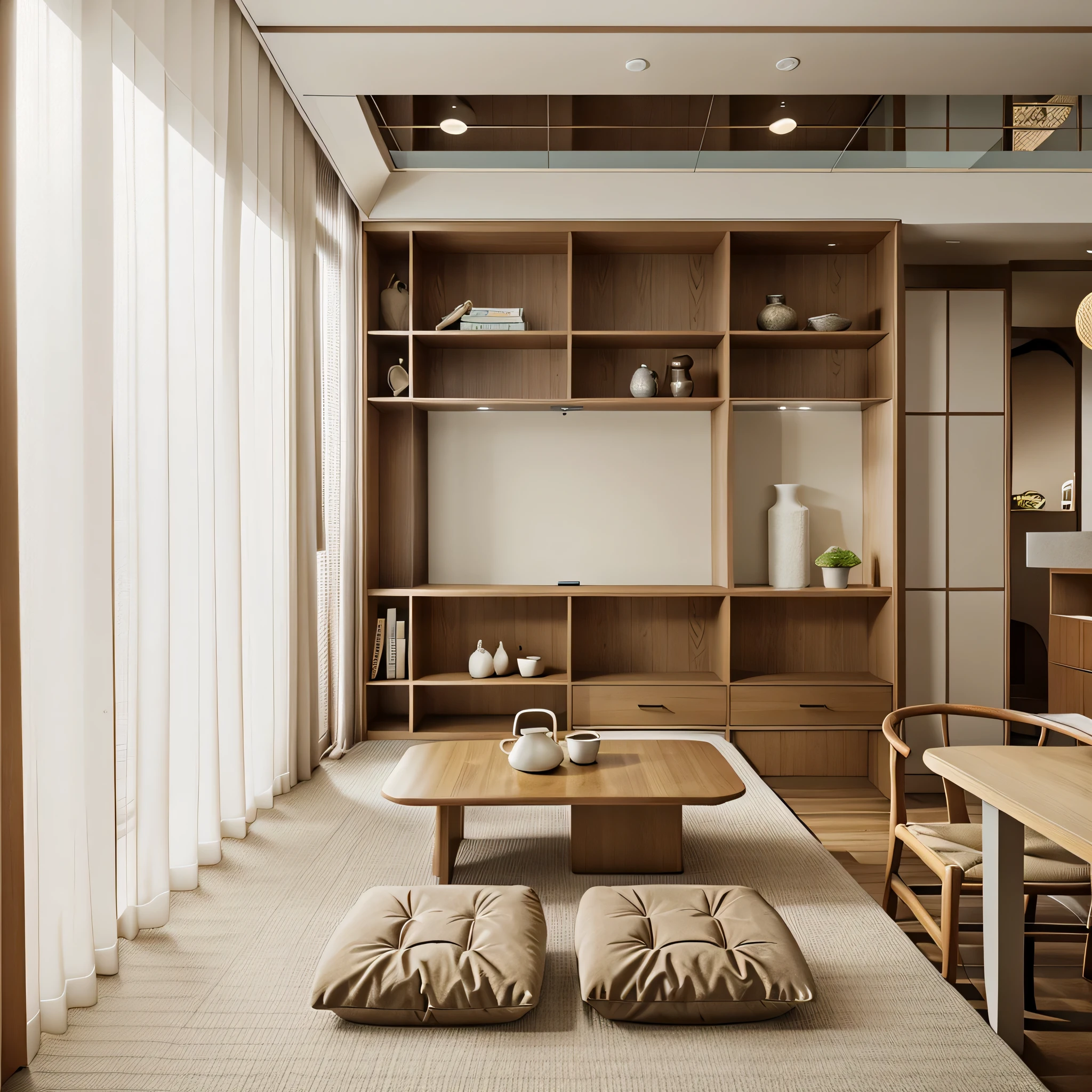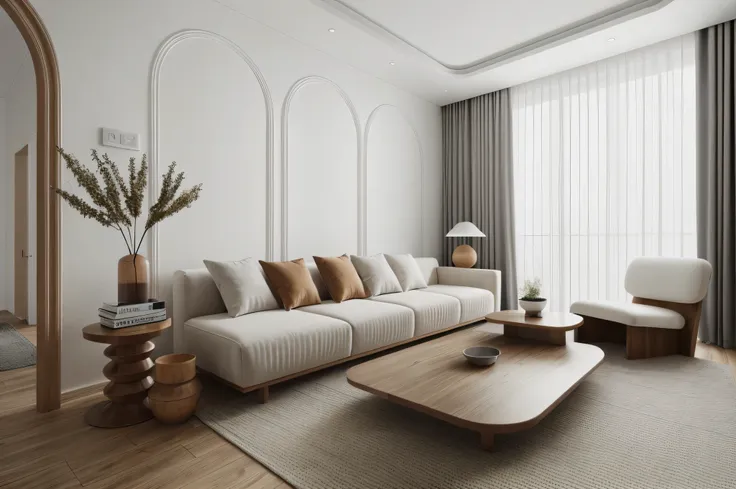A view of a living room with a couch


У меня есть секреты, хочешь услышать?
Japandi style combines the traditional elements of Japan with the simple, minimalist beauty of Scandinavian design. It is a distinct interior design style characterized by the delicate fusion of warmth from natural wood tones and the elegance and tranquility of traditional patterns. Warm wood tones: Using natural woods like oak, walnut, or maple establishes the foundation for the space. Sofas, dining tables, coffee tables, and other furniture often feature natural wood grains, creating a sense of warmth and coziness. White paper doors: Opting for white doors made of traditional Japanese paper material, such as shoji screens, serves as a focal point and allows natural light to filter through, creating a bright and minimalist space. Bright LED lights: Employing LED lights with warm and gentle illumination, whether in yellow or warm white tones. Ceiling lights, table lamps, and floor lamps are designed with simplicity while maintaining aesthetic appeal. Sakura and Mount Fuji landscape paintings: Paintings depicting cherry blossoms (sakura) or Mount Fuji are hung on walls or placed on shelves for visual emphasis. These images showcase the natural beauty and refinement of Japan's nature. Bonsai paintings: Bonsai is not just a type of plant but also an art form. Bonsai images in paintings add an intriguing and unique touch to the space, whether placed on tables, shelves, or hung on walls. Decorative accessories: Incorporate accessories like cotton or linen throw pillows for sofas, decorative pillows with traditional Japanese patterns, room dividers, and ceramic decor such as bowls, plates, and tea sets with simple and traditional motifs. Minimalist furniture and decor design: Furniture designs typically feature simple, minimalist lines without overly intricate details. Emphasis is placed on the quality of materials used and meticulous craftsmanship in every detail.
Подсказки
Копировать подсказки
Japandi style combines the traditional elements of Japan with the simple, minimalist beauty of Scandinavian design. It is a distinct interior design style characterized by the delicate fusion of warmth from natural wood tones and the elegance and tranquility of traditional patterns. Warm wood tones: Using natural woods like oak, walnut, or maple establishes the foundation for the space. Sofas, dining tables, coffee tables, and other furniture often feature natural wood grains, creating a sense of warmth and coziness. White paper doors: Opting for white doors made of traditional Japanese paper material, such as shoji screens, serves as a focal point and allows natural light to filter through, creating a bright and minimalist space. Bright LED lights: Employing LED lights with warm and gentle illumination, whether in yellow or warm white tones. Ceiling lights, table lamps, and floor lamps are designed with simplicity while maintaining aesthetic appeal. Sakura and Mount Fuji landscape paintings: Paintings depicting cherry blossoms (sakura) or Mount Fuji are hung on walls or placed on shelves for visual emphasis. These images showcase the natural beauty and refinement of Japan's nature. Bonsai paintings: Bonsai is not just a type of plant but also an art form. Bonsai images in paintings add an intriguing and unique touch to the space, whether placed on tables, shelves, or hung on walls. Decorative accessories: Incorporate accessories like cotton or linen throw pillows for sofas, decorative pillows with traditional Japanese patterns, room dividers, and ceramic decor such as bowls, plates, and tea sets with simple and traditional motifs. Minimalist furniture and decor design: Furniture designs typically feature simple, minimalist lines without overly intricate details. Emphasis is placed on the quality of materials used and meticulous craftsmanship in every detail.
Информация
Checkpoint & LoRA
0 комментариев
0
4
0










